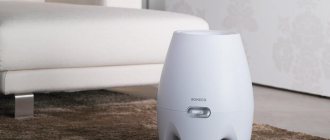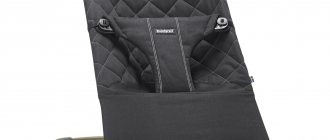The best source of nutrition for a newborn baby is breast milk, and in its absence or shortage, ready-made infant formula. The composition of the latter is subject to strict requirements, both from specialists and from parents. After all, the health, well-being and further development of the child largely depend on the quality of nutrition.
Researchers around the world are working to create an infant formula formula that closely matches the composition of breast milk. The most important thing in this formula is the selection of the optimal balance of saturated and polyunsaturated fats, and in particular, palmitic acid. To do this, manufacturers use various options for milk fat and vegetable oils.
One source of palmitic acid is palm oil, and manufacturers often use it in their formulations. Over time, experts found that palmitine from palm oil differs significantly from palmitine in breast milk, having certain disadvantages.
Today, the best infant formulas are those without palm oil. The required amount of palmitic acid in such products is achieved due to the sufficient milk fat content. Among vegetable oils, preference is given to coconut, soybean, sunflower and others.
The benefits of palm oil-free blends include:
- The ability to ensure the necessary absorption of calcium.
- Normalization of the baby's digestion.
- Boosting immunity.
- Promoting active weight gain in premature infants.
- Variety of species.
The range of mixtures under consideration is divided into two main types:
- For healthy children.
- For children with certain problems (special mixtures).
The mixtures are designed according to age:
- 0-6 months.
- 6-12 months.
- Over a year old.
Depending on the composition there may be:
- With cow's milk. Suitable for healthy children without digestive problems.
- With goat's milk. Perfect for the youngest children and allergy sufferers.
- Fermented milk mixtures. Improves digestion.
- Whey mixtures. Improves intestinal function and normalizes stool.
- Low lactose or lactose free. For babies with lactose intolerance.
- Formulas without milk (based on amino acids). For children with cow's milk protein allergy and other types of food allergies.
Special mixtures are divided into:
- Antireflux. For babies with severe frequent regurgitation.
- Hypoallergenic. Indicated for those at risk of food allergies.
- For premature or underweight babies. They have increased nutritional value and help quickly restore weight.
- And some others.
When studying the composition of the mixture, it is worth paying attention to some components:
- Prebiotics and probiotics. Improves digestion.
- Carnitine. Improves fat absorption.
- Omega 3 and Omega 6 fatty acids. Promote the development of the nervous system and intelligence.
- Lutein. For the formation of vision.
- 2′-FL oligosaccharides. An analogue of a component of breast milk, for the development of immunity, protection against infections, healthy digestion.
Introducing the ranking of palm oil-free infant formulas 2021. The top 11 products that were selected by our experts based on user reviews and ratings.
There are contraindications, be sure to consult your doctor!
| Rating (2021) | Prices, ₽ | A country |
| 1. Neocate (Nutricia) Neocate LCP, 0-12 months | from 2100₽ | Great Britain |
| 2. Bibikol Nanny 1 with prebiotics, from 0 to 6 months | from 2200₽ | Holland |
| 3. Similac (Abbott) 1 Gold, from 0 to 6 months | from 670₽ | Denmark |
| 4. NAN (Nestlé) Antireflux, from birth | from 770₽ | Switzerland |
| 5. Mamako 1 Premium, from 0 to 6 months | from 2000₽ | Spain |
| 6. Nan (Nestlé) 1 Optipro, from birth | from 700₽ | Switzerland |
| 7. Nutrilak Premium Pre, from birth | from 540₽ | Russia |
| 8. Friso Gold 1 without palm oil, from 0 to 6 months | from 700₽ | Netherlands |
| 9. Nutrilak Premium anti-reflux, from birth | from 450₽ | Russia |
| 10. Nestogen (Nestlé) 1, from birth | from 340₽ | Russia |
| 11. Bellakt 0-6 without palm oil, from 0 to 6 months | from 160₽ | Belarus |
Which baby formula without palm oil to choose?
The main criterion for choosing infant formula is the individual approach and the baby’s health condition. You may have to try several types of product until you find your best option.
Among the general points when choosing, we note the following:
- Choose a mixture strictly according to age criteria.
- If the child does not have digestive problems or other characteristics, pay attention to formulas for healthy children. In our selection these are positions 11, 10, 8, 6, 5, 2.
- If you are intolerant to cow's milk, or for babies with increased digestive sensitivity, goat milk formulas 2 and 5 may be suitable.
- Pay attention to the presence of probiotics, prebiotics in the composition, 2′-FL oligosaccharides, these are valuable components for improving digestion and enhancing immunity. Omega acids are important for the development of mental abilities.
- For babies who frequently burp, antireflux formulas are recommended to solve the problem (4, 9).
- If a child is not gaining weight well, or was born premature, he needs special Pre formula (7).
- For a baby with complex food allergies, including an allergy to milk proteins, only a special dairy-free formula is suitable (for example, position 1). Feeding with this mixture is prescribed by the pediatrician.
- When choosing, you should pay attention to the shape of the packaging and the choice of volume options. Some manufacturers include packaging in large, economical formats.
Enjoy the shopping!
Thanks to All.ru in Yandex Zen. Daily updates, subscribe, we have a lot of interesting things
Daily updates, subscribe, we have a lot of interesting things
Why is it added to infant formula?
Many mothers, for various reasons, do not have the opportunity to feed their baby breast milk and, to replace it, use infant formula, the composition of which is constantly being improved. In order for food to fully satisfy the baby’s fat needs, its composition must be the same or as close as possible to the fat in breast milk. This refers not only to the chemical composition of fat (fatty acids), but also to its spatial structure (triglycerides). Since each fat, including breast milk fat, is unique, this is difficult to achieve. The milk fat in cow's milk is different in composition from the fat in breast milk and therefore needs to be adjusted. It is carried out by introducing into the product composition permitted vegetable fats or their fractions and specially prepared fish oil.
Important! To ensure that the fat component of the mixture contains the same fatty acids as breast milk fat, vegetable oils of various origins and fish oil are added to it.
Among the permitted fats is palm oil, which belongs to the so-called palmitic group. This group consists of cocoa butter, cottonseed oil and palm oil. They contain the maximum amount of palmitic acid, which is especially abundant in human milk. However, only oil palm oil has its maximum content. In addition, cottonseed oil is prohibited for use in baby food by current technical regulations due to the presence of components that can negatively affect the growth and development of children. Thus, to balance the composition among all possible candidates, palm oil remains the only most suitable and relatively safe option.
Important! Palm oil contains the largest amount of palmitic acid in its composition and is approved for use by nutrition institutes as its source in infant formula.
How to choose a mixture
Retail chains offer a wide range of baby food. When making a decision when purchasing the right brand, it is very important to avoid mistakes. After all, the health of the child depends on the correct choice. First of all, you need to pay attention to the following indicators:
- Compound.
- Whey milk percentage.
- Lactose percentage (it should be minimal).
- Recommendations for the category of children for whom this product is intended.
Price is important. You have to buy formula milk regularly. Therefore, an important criterion is the optimal price-quality ratio. Otherwise, the family budget will suffer greatly. You should not overpay for branding and advertising. Sometimes the quality of similar products is quite up to standard. The rise in price of products is due to packaging. In order not to overpay for a metal can, you can buy milk at a budget price in a cardboard container. The powder can be easily poured into a glass jar.
It is imperative to take into account the opinion of the pediatrician. He can give important recommendations, knowing the characteristics of the baby’s body. If the mixture is not suitable, there is no need to panic. Each brand has its own characteristics. It may take some time for your baby to get used to the food. Therefore, complementary foods should be introduced gradually; at first it is better to give a minimal amount. In this case, you need to observe how the child’s body reacts to the innovation in the diet. If there are no negative effects, the portion can be increased. This will result in a complete transition to artificial feeding.
Therefore, it is impossible to definitively answer the question of which mixture is the best. This issue is decided individually for each child.
Health not only at the present moment, but also in future stages depends on how correctly the nutritional mixture was selected.
Compliance with hygiene rules when preparing for feeding and the shelf life of diluted milk is an important point. In a baby bottle that is not washed promptly, pathogenic bacteria multiply. Also, the dishes should not just be rinsed, but boiled.
Is there any harm
Most often, what is hidden on the packaging under the name “palm oil” is not the oil itself, but its fractions – olein and “super” olein. Their quantitative chemical composition, melting point and spatial structure of molecules (triglycerides) differ significantly from the original product. In addition to the high content of palmitic acid, palm fat is resistant to oxidation, during which substances that are far from useful and even harmful to health are formed. Thanks to this property, it stands out among all fats and from this point of view is safer.
Opponents of the presence of palm fat in baby food often rely on scientific studies that have shown the negative role of palmitic acid, located in triglycerides in positions 1 and 3. In the gastrointestinal tract, such a molecule is exposed to the action of the enzyme lipase, which is able to cleave fatty acids from triglycerides only in positions 1 and 3. As a result, free palmitic acid, binding to calcium, forms an insoluble calcium soap, which is not absorbed by the body and is excreted, thereby interfering with the absorption of this element. At the same time, babies experience constipation, colic, and bones grow slowly and become more fragile.
Read more about infant formula for constipation and colic in this article.
However, in all vegetable oils, not just palm oil, palmitic acid occupies precisely this “harmful” position, while in breast milk fat it is predominantly characterized by position 2.
Adding palm olein (even better “super” olein) to the mixture can reduce the proportion of triglycerides in which palmitic acid occupies the 1,3 position, increasing the proportion of triglycerides in which it is in position 2, and the 1,3 positions are occupied by oleic acid. This increases calcium absorption.
Today, the most correct solution to the existing problem is the use by some manufacturers of modified palm oil, in which palmitic acid occupies the central position 2 in triglycerides (β-palmitate) and allows the unhindered absorption of calcium. In addition, the application of this technology to other vegetable oils makes it possible to create fat as close as possible to breast milk fat in chemical composition and the structure of its molecules. An example is Materna baby food, which contains a unique composition of several modified vegetable oils. Unfortunately, it is not very common due to its high cost. But there are also cheaper analogues using similar technology:
- Nutrilon Comfort 1;
- Heinz Infanta 1;
- Cabrita Gold 1;
- Hipp comfort;
- Celia is anticolic;
- Humana is anticolic.
Important! The use of β-palmitate makes it possible to bring infant formula fat closer in palmitic acid content to the fatty acid composition of human milk, while simultaneously solving the problem of calcium digestibility that arises when using palm oil.
Nestozhen 1
Nestozhen 1 is also recommended for feeding infants. It includes a protein and vitamin complex, essential for the development of the baby and its growth. Nestozhen 1 contains natural dietary fiber, which helps improve the digestion of food and achieve regular bowel movements. The food contains lactobacilli, which help to form intestinal-friendly microflora, reducing colic, excessive gas production, vomiting and discomfort in the newborn. The product contains no coloring agents or preservative additives.
Expanding the question: Expanding the menu of a 9-month-old baby on IV
Composition Nestozhen 1
Nestozhen 1 includes whey, milk (skimmed), complex sugar lactose, triglycerides of fatty acids, prebiotic complex, milk fat, vitamin complex and minerals. Baby food contains a complete complex of minerals. In nutrition, it is worth listing a long list of vitamins - complex B1, B2 and B6, vitamin D, K, pantothenic and ascorbic acid and many other useful substances. The energy value of the product is 499 kilocalories per 100 grams. It contains 10 grams of protein, 26 grams of fat, 56 grams of carbohydrates (per 100 grams). There is no palm oil in the mixture.
Preparation
The powder should be stored in a dry cabinet and used after the packaging has been damaged within 3 weeks. Eating should be done before each meal exactly according to the instructions. If the products remain, they cannot be fed to the newborn after some time. To prepare Nestozhen 1 you need boiled water (37 degrees). This will preserve the beneficial bacteria contained in Nestozhen 1. Using a measuring spoon, add the required part of the mixture to warm water and stir until smooth. You should not change the ratio of products yourself, this can lead to difficulty in digestion.
Trademarks and manufacturers
Most food manufacturers adequately respond to the desire of parents to feed their children with formulas without the inclusion of palm oil. Therefore, in a number of their products there are infant formulas without its use. These mixtures include: Similak 1 (manufactured in Denmark), Nestozhen 1 (manufactured in Switzerland) and Nanny 1 mixture (manufactured in New Zealand). Some baby food manufacturers have gone so far as to change the palmitic acid found in palm oil to beta palmite. Nutrilon (produced in the Netherlands), Kabrita and Heinz (production located in Russia) porridges with this component are produced. Pediatricians will recommend which products are best, but the final choice will be made by the baby.
We reveal the question: List of foods that cause colic during breastfeeding











